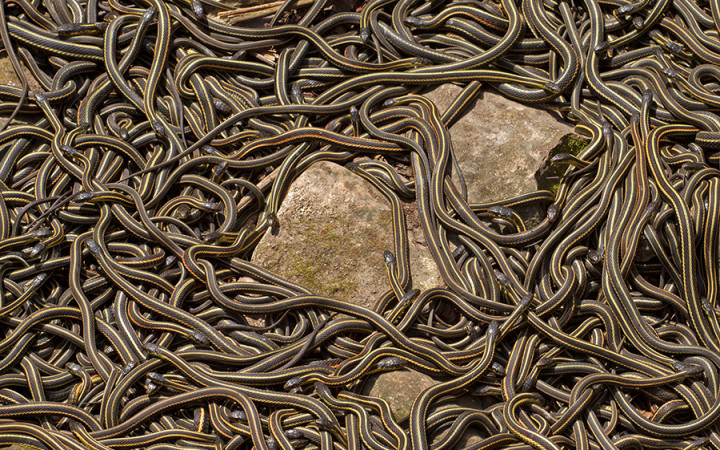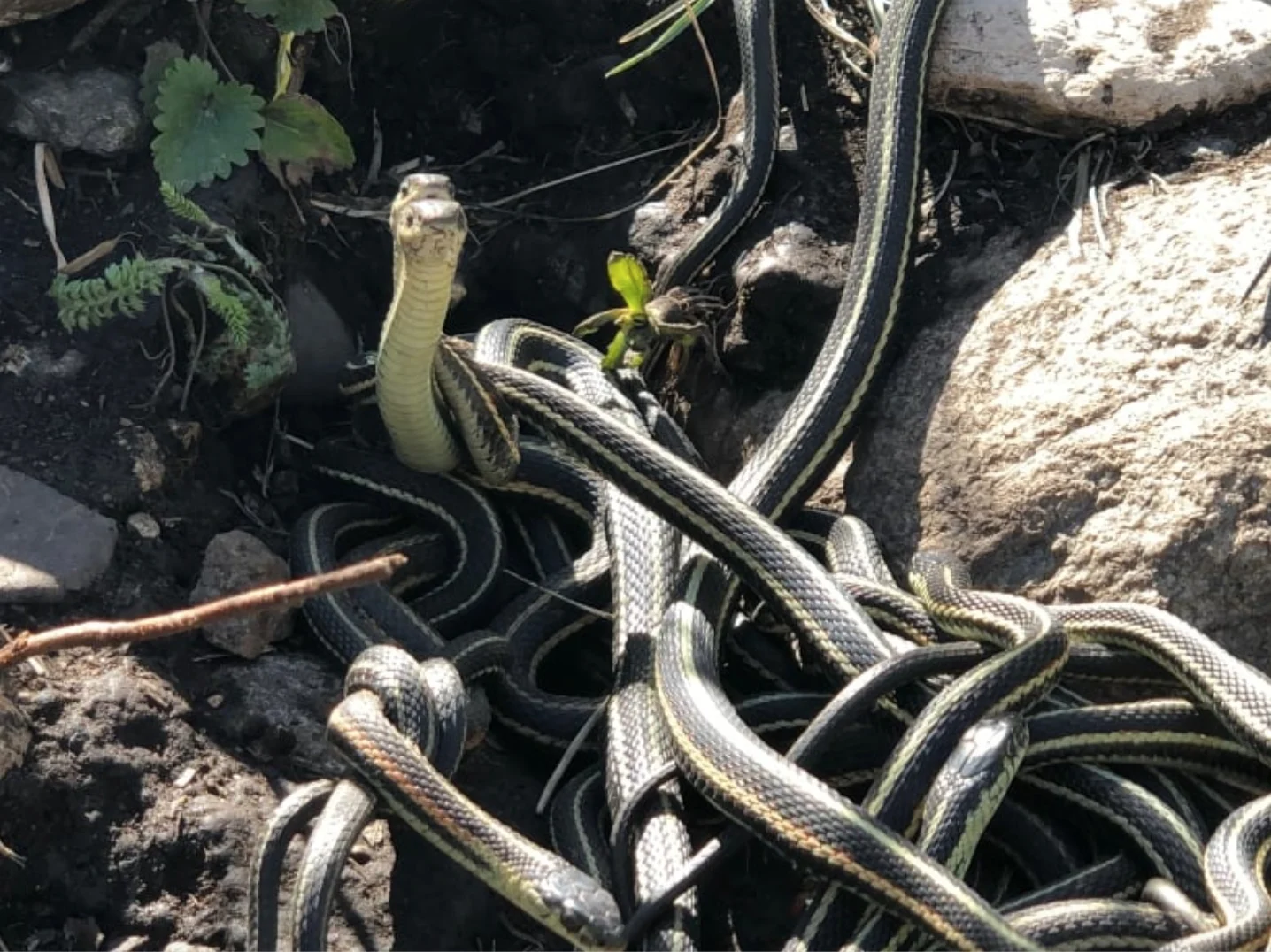“They have to get below the frost line, or else they die. In those areas around Fort Livingstone you’ve got limestone bedrock which over geologic time will erode and create little caverns and cavern systems,” said Poulin.

These subterranean networks are below the frost line and the perfect place for a winter-long snake cuddle session, or “hibernaculum.”

When the snakes leave the safety of the hibernaculum in the spring, it is for the purpose of mating. They don’t go far from where they wintered, said Poulin, and they don’t waste any time.

“The males come out first and they warm up a little bit in the sun and then when the females emerge from the den it’s a big frenzy.”

(Image: Every year thousands of red-sided garter snakes rouse from hibernation near Fort Livingstone and immediately mate. Courtesy of Nicole Lavergne-Smith via CBC News)
The tangle of snakes is called a mating ball, according to Poulin. “The males will form a big congregation on any female that comes out. So you’ll often see, sort of, a mass snakes that are, sort of maybe, falling down the hillside or moving all at once and what that is, is there’s a female in the centre of that and all the snakes on the outside are males trying to mate with her,” he said.




